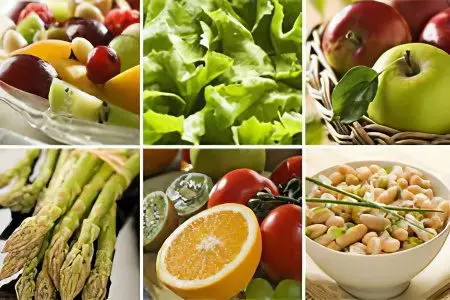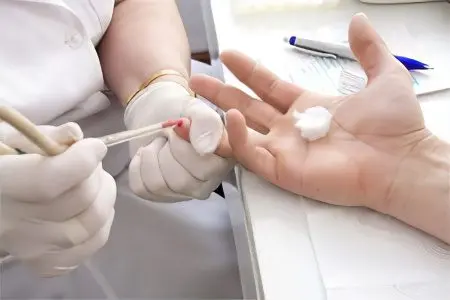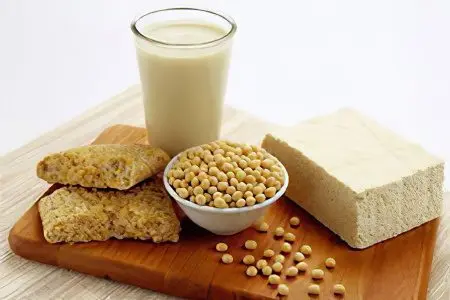Contents

Keeping blood sugar at the recommended level is a vital necessity for anyone with diabetes. For the sake of the cherished numbers, a lot of money is spent on insulin, glucometers, test strips, hypoglycemic drugs, visits to doctors and tests. Although you can get rid of the lion’s share of these expenses and problems simply by reviewing your diet. And most importantly, you can significantly improve the quality of life, and, believe me, you can do it.
A low-carb diet has its own quirks and addiction difficulties, but your efforts will be rewarded handsomely. We do not promise that in just a couple of weeks, even with type 1 diabetes, you will be able to completely “get off” insulin and forget about it like a nightmare – only irresponsible charlatans can make such promises.
But a low-carb diet is guaranteed to provide you with a number of benefits:
Complete control over blood sugar levels and no unpleasant surprises;
Significant savings on hypoglycemic drugs;
Stopping weight gain and even losing weight;
Consistently good health;
Slowing down the course of diabetes;
Prevention of severe complications of the disease;
Reducing the dosage of insulin and, in the future, possibly abandoning it.
What Diet Helps Lower Blood Sugar?
Most endocrinologists advise their patients to eat light and varied, not to overeat and not to consume sugar. Good advice, but do all diabetics correctly understand what the doctor meant by the word “sugar”? Practice shows that not all. This doesn’t mean you can’t just put sugar in your tea and eat it with candy. Hidden sugar is found in a huge number of foods, and it can be difficult to detect it with the naked eye.
When this happens, the unfortunate person urgently injects himself with insulin and drinks drugs that neutralize the carbohydrate “hit”. But such measures are fraught with a new disaster – bouts of hypoglycemia. The conclusion is obvious: you need to try to keep your blood sugar levels under vigilant control. And you can do this only by armed with a complete list of recommended and prohibited foods, as well as regularly using an accurate glucometer. Buying high-quality medical equipment for measuring blood sugar levels is a paramount task! If the device “lies”, all your efforts to normalize well-being will go down the drain.
When you switch to a low-carb diet, after a few days the first positive changes will appear: blood sugar will gradually decrease and freeze at the recommended level. At this point, the main thing is not to relax and continue to follow the chosen diet.
At first, the diet may seem meager and unusual to you, but most likely this is simply because you have not prepared everyday meals with a record low content of carbohydrates before. Believe me, the range of ingredients will be wide, and then everything depends only on your culinary imagination. In fact, there is only one objective reason not to switch to a low-carb diet – a severe complication in the kidneys, which we will discuss next.
Low-carbohydrate diet and diabetic nephropathy

It is very difficult for patients with diabetes mellitus, who have already begun to develop a formidable complication on the kidneys – diabetic nephropathy. If we are talking about the early stage, then with the help of a low-carbohydrate diet, you can just save the kidneys from total dysfunction. The fewer carbohydrates you eat, the slower the nephropathy will progress.
That is why, before making a drastic change in your diet, you need to consult with your endocrinologist and undergo an examination in the laboratory. Only a doctor can decide on the revision of the diet of a patient with diabetes mellitus.
General principles of nutrition in type 1 and type 2 diabetes
Before discussing in detail what foods and how much you are recommended to consume, let’s outline the general strategy for behavior in type XNUMX and type XNUMX diabetes:
Get a handy and accurate blood glucose meter and use it as often as necessary to select the right products and develop an accurate menu. The issue of saving should not even be raised, because on the consequences of malnutrition you will then go bankrupt, not to mention the fact that you will finally lose your health;
Start a food diary and learn how to plan your diet for several days, and preferably a week in advance;
Stick to a low-carb diet and try to resist the temptation to eat something forbidden, because every little whim turns into big trouble for a diabetic;
Monitor your blood sugar levels and constantly adjust the dosage of insulin and antidiabetic drugs until you reach a comfortable “normal” for yourself. If you have Type XNUMX or Mild Type XNUMX Diabetes, a low-carbohydrate diet may allow you to be off medication entirely;
Walk more often, do not overwork at work, try to sleep at least 8 hours a night and exercise regularly. Even for patients with a huge excess weight and many concomitant diseases, you can pick up a feasible sports load.
On the subject of costs: after a few weeks spent on a low-carb diet, you will be able to improve your budget by saving on insulin and drugs that regulate carbohydrate metabolism. Even if it is not possible to completely abandon such support, dosages will in any case be significantly reduced. And most importantly, you can finally stop being afraid of sudden jumps in blood sugar levels and the threatening consequences of this condition. Calm nerves will not slow down to have a positive effect on your overall well-being.
Consider now the principles of the most low-carb diet:
It is necessary to consume no more than 120 g of carbohydrates per day (with severe diabetes – 60-80 g), then you will reliably insure yourself against an undesirable increase in blood sugar levels. It is also important not to eat all these carbohydrates at once, but to divide them into 3-4 servings throughout the day. This will allow you to save pancreatic beta cells, which are so necessary to control the course of diabetes;
Eliminate from your menu all foods containing pure sugar, or quickly transforming into glucose. It’s not just about cakes and sweets. Ordinary potatoes, porridge or pasta are no less dangerous for diabetics, because the starch contained in them instantly becomes glucose and strikes at health. These products are much more likely to cause trouble, because you will eat one or two sweets, and you can screw up a plate with pasta and gravy;
Switch from three meals a day to four to five meals a day, and only sit down to eat when you’re really hungry. You need to get up from the table with a feeling of pleasant lightness in the stomach.
It is better to form portions so that during each meal you receive approximately the same amount of protein and carbohydrates. This is important for the stability of the state of the blood, as well as for you to get used to eating a certain amount of food.
Discomfort will pass very quickly if you can enjoy the diet. Overeating, of course, is pleasant, but the consequences of such an attitude towards oneself are catastrophic. By following a low-carb diet, you will begin to feel calm and proud of your success. Perhaps this diet will open up new horizons of taste for you, because now the important thing will be not the quantity, but the quality of food.
How often should blood sugar levels be measured?

After switching to a low-carb diet, you will have to use the glucometer a little more often than you are used to.
This is necessary for two reasons:
To make sure that a sharp restriction of carbohydrates in the diet led to a decrease and stabilization of sugar indicators;
To calculate the dosage of insulin and carbohydrate balance regulators, taking into account the situation that has changed for the better.
The control measurement of blood sugar levels after taking a low-carbohydrate meal is carried out in four stages:
5 minutes after eating;
After 15;
After 30;
In 2 hours.
The glucometer readings will surely pleasantly surprise you. In the future, as your menu is enriched with new products and dishes, you will need to check how your body reacts to them. There are so-called “borderline” delicacies for diabetics: tomato juice, full-fat cottage cheese or nuts, for example. After eating a couple of spoons of cottage cheese or a handful of nuts, be sure to measure your blood sugar after an hour, and then after another 2 hours. If everything is in order, you can sometimes include these foods in the diet. But with a severe form of type XNUMX diabetes, it is better not to risk it.
What foods are bad for type 1 and type 2 diabetes?

What foods raise blood sugar levels?
Let’s unmask our enemies – we will announce a list of products that are categorically not recommended for people with type XNUMX and type XNUMX diabetes. The first reaction to a long string of favorite product names can be disappointment, even despair. But not everything is so bad – at the end of today’s conversation, we will give a “white” list, which will, firstly, be about the same long, and secondly, certainly no less tasty.
Products from the “black” list will surround you every day, and when you are at work, traveling, visiting, in a restaurant or cafe, the temptation can become almost irresistible. It is unlikely that anything will save you, except willpower, but if you know that today you will not be able to eat in your usual home environment, do not hesitate to take a light snack from allowed foods: ham, cheese, eggs, nuts. Never eat anything from the following list:
Sweet, starchy and starchy foods:
Any type of sugar (cane or beet, brown or white);
Sweets, bars, marshmallows, marshmallows and in general any sweets, including special ones, “for diabetics”;
Cereals and cereals from them (rice, oatmeal, semolina, corn, wheat, and so on);
Ready-made meals, the composition of which you do not know for sure (for example, store-bought salads or cottage cheese from the market);
Potatoes (no matter how they are cooked);
Bread, buns, bread rolls and in general any pastries from any type of flour and cereals;
Quick breakfasts such as cereal and muesli;
Homemade meals prepared with potatoes and forbidden vegetables (see the list below).
Vegetables and fruits:
Absolutely any fruits and juices from them;
Red beetroot;
Pumpkin;
Carrot;
Yellow and red paprika;
Any beans (peas, beans, lentils);
Onions (especially boiled or fried);
Tomatoes that have undergone heat treatment.
Some dairy products:
Whole milk, especially skimmed;
Sweet fruit yoghurts and curds;
Skim cheese;
Condensed milk.
Ready meals and sauces:
Any semi-finished products (dumplings, dumplings, pancakes, pizza);
Instant soups and canned soups;
Snacks packaged in bags (chips, crackers, seeds, snacks, onion rings);
Soy sauce, balsamic vinegar, ketchup and generally any sauces with sugar;
Sweeteners and sugar substitutes:
Bee Honey;
Any sugar substitutes and products containing them (check the label for xylitol, xylose, malt, glucose, fructose, dextrose, lactose, corn or maple syrup, maltodextrin);
Foods labeled “diabetic” that contain fructose and cereal flour instead of sugar and regular flour.
How do you know which foods raise your blood sugar?

If you have not tried a particular product before, but, judging by the composition, it should suit you, first conduct a control test. Eat just a couple of spoons, and then measure your blood sugar after a quarter of an hour, and after two hours. Before that, calculate on the calculator how the indicator of the device should grow.
To make calculations, you need to know:
The nutritional composition of the product (the amount of proteins, carbohydrates and fats per 100 g);
The weight of the portion eaten in grams;
By exactly how much mmol / l does your blood sugar usually rise due to one carbohydrate received;
By exactly how much mmol / l does your blood sugar level usually decrease after taking one unit of insulin.
Such testing is simply indispensable in the case when you do not trust the data on the label, or there is no factory packaging at all. For example, fatty homemade cottage cheese, which is not contraindicated for diabetics in principle, is bought by many from their hands at the grocery market. But this is a big risk, because competition forces grandmothers to sweeten their product so that it tastes better. A similar situation can arise when buying a ready-made cabbage salad in a supermarket – sellers also often add sugar there.
Only armed with accurate data, you can find out if the consequences of using a new product meet your expectations. If the results of the calculations correlate correctly with the readings of the glucometer, and the value of these readings suits you, you can safely expand the menu.
Choose products wisely – read labels
To make your diet as diverse as possible, you need to learn how to carefully read the information on the labels and distinguish between suitable products and inappropriate ones. Perhaps you added something to your black list in vain, and undeservedly provided a place in the white list for something. Above we have provided a list of the most commonly used sweeteners in the food industry. If you see dextrose, fructose, maltodextrin, or any other of the listed components in the composition of the product, you should know that this purchase will cost you more than its price.
Our best friends are anti-record holders for carbohydrate content. At the same time, high fat content should not be ignored, because it is fraught not only with weight gain, but also with problems with cholesterol and blood vessels. Remember that our legislation is soft: food manufacturers can deviate from the declared nutritional values by as much as 20%!
Separate, and not at all flattering words deserve the so-called special products for diabetics, fat-free, dietary and other disguised pests. To make a low-calorie product, which, in principle, cannot contain fat, sugar and its substitutes are shoved there instead of fat, as well as all sorts of garbage – thickeners, dyes, emulsifiers, flavorings and preservatives. This is the only way to distort food beyond recognition, but keep an attractive taste. Along the way, you can save a lot due to cheap raw materials and chemical additives.
American professor Richard Bernstein, in the course of his medical practice, came across an amazing discovery. He had two patients with type 900 diabetes, both very thin people who, during the low-carb diet, also lost weight. The question arose, how can they get better? First, the doctor suggested that they enrich their daily diet with a hundred milliliters of healthy olive oil. This is as much as XNUMX kcal, but even after two months, the patients could not gain weight. Only an increase in the proportion of proteins in the diet helped to correct the situation.
Difficulties in switching to a low-carb diet
The drop in blood sugar levels as a result of eating a low-carbohydrate plan is rapid. In the first two weeks of the diet, you need to use a glucometer eight times a day. If you see that the indicators are consistently low, immediately adjust the dosage of insulin and drugs that regulate carbohydrate status. It is simply dangerous to inject yourself with the usual doses – this is a direct road to hypoglycemia.
Your family, friends, work colleagues (all the people who surround you daily) should be aware of your condition and be ready to help. Always carry glucagon with you and some sweets in your bag or pocket.
The best solution would be to spend the first week in a hospital or sanatorium. If you can’t take vacations or sick days, at least don’t overwork yourself, avoid stress as much as possible, and get a good night’s sleep. Consider also switching your family members to at least partially low-carb diets. This will not only be a kind of moral support on their part. The eating plan in this article is also good for healthy people, especially if they want to lose weight.
Diabetic parents should also think about such a problem as hereditary predisposition. Let your children get used to a low-carbohydrate diet from childhood, then the risk of developing diabetes in the future will be significantly reduced. You should not believe modern nutritionists and pediatricians who zealously call for feeding children with yogurt and fruits.
In support of this unexpected opinion, one can cite the history of the indigenous peoples of the Far North. From ancient times, these people ate monstrously fatty and high-calorie foods: venison, seal and whale blubber, and ocean fish. But neither obesity nor diabetes were familiar to them. As soon as “civilization” invaded the north, a flood of sugar, starch and alcohol followed it. The health of the indigenous northern peoples has since deteriorated dramatically.
What foods help lower blood sugar levels?

We’ll start our discussion of the low-carb whitelist with the most important rule to keep your blood sugar at the recommended level:
There is a common phrase: “You must not live in order to eat, but eat in order to live.” Wise words worth listening to. Some people with diabetes manage to get their blood sugar levels under control only after they take control of their own lives. A positive mental attitude is very important for anyone suffering from a serious chronic illness. Think, maybe it’s time to change something: find yourself a new business to your liking, improve your personal life, take up some interesting hobby, sign up for cooking classes? There are so many good opportunities in life, you just need to want and take the first step.
Now let’s move on to discussing our future menu. At first glance, the list of allowed foods is small, but then we will clearly demonstrate that it is quite possible to make a complete and tasty diet out of them.
Allowed foods on a low-carb diet:
Fresh meat and meat products, except for smoked meats, sausages and sausages with the addition of milk and sugar;
Bird;
A fish;
Seafood;
Eggs;
Green vegetables;
Mushrooms;
Fatty dairy products;
Some types of nuts;
Vegetable oils;
Coffee Tea.
How much meat and fat – you will be surprised. Such a diet looks wild, given the opinion of modern experts in healthy nutrition. All of them unanimously insist that you need to stay away from fatty meat, cheese and chicken eggs if you want to lose weight. At first glance, we are not pursuing such a goal – we just need to lower the level of sugar in the blood. But the practice of using a low-carb diet proves that it helps to lose weight! As for fats, not all of them are harmful.
You can easily verify the truth of this statement from personal experience. Before switching to a low-carbohydrate diet, take a blood test for a “cholesterol profile”. Doctors sometimes refer to it as the “atherogenicity factor”. After 3-6 months, repeat the test, and rest assured that your GP will be shocked by the positive changes that have occurred in your blood while following a low-carbohydrate diet.
Vegetables
A simple principle will allow you to correctly calculate a portion of a green vegetable side dish: if these are raw vegetables, you can take a full cup, if they have been cooked, we take two-thirds of a cup. This volume corresponds approximately to 6 grams of carbohydrates. Onions and tomatoes, as you remember, are not advisable at all, but if you have mild diabetes, you can add them to the salad, only in raw form.
Vegetables under the influence of heating change not for the better for diabetics. Rough dietary fiber found in vegetables becomes soft and partially converted into glucose. Therefore, the level of sugar in the blood after eating them rises faster and stronger. If you have a complication on the stomach – gastroparesis – all the more consider this feature of boiled and stewed vegetables. Use a blood glucose meter to find out for sure which portion is safe for you.
The following vegetables and mushrooms are recommended for a low-carb diet:
All white and green varieties of cabbage (white, kohlrabi, broccoli, cauliflower, Beijing, sea);
Fresh herbs (dill, cilantro, basil, parsley, oregano, rosemary, thyme, mint, tarragon);
Leaf lettuce and salad mixes (lettuce, iceberg, arugula and others);
Spinach, sorrel, leek and green onions, celery, asparagus;
Tomatoes and tomato juice (no more than 50 g at a time);
Champignons, boletus, mushrooms, shiitake and other mushrooms;
Green beans;
Eggplant;
Zucchini;
Cucumbers;
Squash;
Hot pepper.
Milk and dairy products
You are probably familiar with the term “lactose”. This is milk sugar, which, when ingested, is very quickly and easily absorbed. Of course, a couple of teaspoons of milk added to coffee won’t spike your blood sugar. But you won’t really feel the taste either. But heavy cream would have come to the court: they are better suited in terms of composition and more pleasant in effect. We have already mentioned the hidden dangers of low-fat “milk”: the lack of lipids is compensated by carbohydrates so that the products are not completely watery.
Cheeses are made from whole milk and rennet. As a result of the fermentation reaction, milk sugar is broken down, therefore, with diabetes, the consumption of almost any type of cheese is allowed. But in the process of making cottage cheese, not all lactose is neutralized by lactic sourdough. However, 150 g of high-quality, fatty cottage cheese per day is quite possible, you just need to divide this amount into three doses.
Butter is also allowed with a low-carbohydrate diet, there is almost no lactose in it. But be extremely careful when choosing an oil. Remember our recommendation – read the information on the labels. Now on sale there are a lot of skillful imitations of natural cow butter. This product is very expensive, so manufacturers add cheap vegetable fats, margarine and a whole range of food additives to high-quality raw materials to give the spread the taste, smell and color of real butter. Worst of all, sugar can be present in the composition of such “imitations”.
The situation with yoghurts is deplorable: store shelves are full of cups with incomprehensible liquid, richly flavored with sugar and tinted with fruit concentrates. And all this is sold for big money under the slogan “give weight loss!” and “strengthen your child’s immunity!”. For a miraculous effect, some live bacteria are packed into the jars, most of which do not survive at all to get into the place where they should be beneficial. On a low-carb diet, only natural, thick yoghurts without any additives are acceptable. They contain an average of 6 g of carbohydrates per 100 g, but proteins – 15 g. But it is very difficult to find such yogurt in stores.
Dairy products that help lower blood sugar levels:
Cheese (any, except fetaksy);
Butter;
Fatty cream;
Yogurt natural;
Fat cottage cheese (no more than 50 g at a time).
Soy products

Soy, in a sense, helps diabetics compensate for separation from milk and pastries. Soy milk can be added to coffee or tea, or simply drunk as a standalone drink in small quantities. Cinnamon and stevia extract will help diversify the taste sensations.
Tofu is made from soy milk. The taste of this product is specific, but the balance between carbohydrates, proteins and fats is very tempting for diabetics. The same can be said about soy flour. If you mix it with egg and butter, you get the base for baking. Chops and pieces of fish fillet fried in a similar batter are very appetizing.
So-called “soy meat” is allowed on a low-carb diet, but be careful when buying prepared foods made from it. For example, asparagus salad (soy imitation) contains many food additives, which may include sweeteners or regular sugar.
Condiments and sauces
Pepper and spices help make a low-carb diet more attractive, and also improve digestion due to the accelerated secretion of gastric juice. You should carefully study the rows of bags and jars of seasonings in order to be fully equipped when it comes to cooking meat, fish and poultry dishes. By the way, keep in mind that cinnamon and vanilla are almost always sold mixed with sugar! As for salt, the situation is ambiguous.
Any store-bought sauces (mayonnaise, ketchup, balsamic, mustard, etc.) almost certainly contain either white sugar or other carbohydrates, and most often both. Mustard can still be found with a natural and safe composition, and it is better to learn how to make mayonnaise yourself. This is a laborious and relatively expensive undertaking, but the result is worth it: once in your life, having tried homemade mayonnaise, you will spit from the store.
Seeds and nuts
Any seeds and nuts are the embryo of a future plant, so the main components in their composition are amino acids and fats. Of course, there are also carbohydrates there, but their content is not the same for different types of nuts. For example, cashews and peanuts are not recommended on a low-carbohydrate diet. But hazelnuts and Brazil nuts are quite suitable. There are also “borderline” options that you need to check for yourself, armed with a glucometer. You can eat about five almonds and walnuts, and then see what the device says. However, in any case, you should not eat more than ten pieces in one sitting.
Sunflower seeds are well tolerated by diabetics. You can afford to eat a whole handful at a time. As for pumpkin seeds, they can have a carbohydrate content of up to 13,5 per 100 g, so test with a glucometer first, and then allow yourself to click on some of these seeds.
Coffee, tea, soft drinks and alcohol
Tea and coffee can be drunk in any quantities with a low-carb diet, but, of course, without sugar. If your diabetes is complicated by arterial hypertension, vascular atherosclerosis, ischemia, obesity and other related ailments, consider the effect of caffeine on the body. Some types of tea, such as green tea, contain more of this substance than instant coffee! To sweeten hot drinks, use a natural remedy – stevia leaf extract. For taste, you can add a little cream, we have already voiced this above.
Almost all soft drinks except mineral water contain either tons of sugar or the same equivalent of chemical sweeteners. Coca-Cola, Fanta, Sprite, and other lemonades in diabetes are strictly forbidden to drink and very dangerous. If you want to diversify the taste of mineral water, squeeze a little lime or lemon juice into it. The same can be done with ordinary clean drinking water, plus a little stevia extract – and you get homemade lemonade. For the hot summer months, an excellent option is iced tea, but not bottled in the store, but homemade.
We will not dwell on alcohol in detail, because such drinks are not useful in principle, and even more so for a sick person. Let’s just say that strong alcohol in very small quantities is acceptable for diabetes, but beer and wine should be kept as far away as possible.
Constipation with a low-carb diet – how to get rid of it?

The only almost inevitable complication of a low-carbohydrate diet is constipation, especially at first. The body is used to getting plant fiber with food, and here we deprived it of all fruits and the lion’s share of vegetables. The intestine is “lazy” to promote food itself, and the restructuring in its work can drag on for many months.
To avoid this, follow a few simple guidelines:
Drink at least two liters of clean drinking water every day;
Try to compensate for the lack of fiber (more on this below);
Move more (walk, ride a bike);
Make sure you are not deficient in magnesium and vitamin C;
Provide yourself with a cozy, comfortable toilet.
Professor Bernstein, whom we have already mentioned, believes that the body of each person is purely individual, and for good health, someone needs to walk three times a day, and someone three times a week. But most gastroenterologists agree that regular daily stools are required, because only then can we get rid of our waste products in time and avoid self-poisoning.
Fluid balance in the body
On the correct balance of fluid, you need to dwell in more detail. The fact is that in some elderly patients, diabetes mellitus gives a complication on the brain, which is called hyperosmolar syndrome. The nerve center responsible for the feeling of thirst ceases to function, and a person brings himself to dehydration without noticing it. In advanced cases, this condition turns into coma and death.
Get in the habit of filling a two-liter bottle of clean water every morning. When you go to bed in the evening, this bottle should be empty. Try to drink little by little at regular intervals, and not finish the forgotten water in one gulp. This will definitely help your gut adjust to a low-carb diet.
Useful fiber
Although we said goodbye to fruits, we still have a lot of vegetables in stock in order to provide the intestines with fiber. The leading supplier is cabbage, especially raw. Stewed eggplant and zucchini, fresh cucumber salad with vegetable oil are perfect. When you eat a hearty meat or fish dish, be sure to combine it with a vegetable side dish. This will aid digestion and prevent constipation.
Fiber can be obtained not only from the white list of vegetables. For the most “advanced” there are alternative sources:
Purchase dried flaxseeds from the drugstore, grind them in a coffee grinder, and season your dishes generously. Flaxseed contains special oils that have a mild laxative effect, in addition, they have a lot of fiber;
A plant called flea plantain has the same beneficial properties. You can search for it in pharmacies or order it in online health food stores;
Microcrystalline cellulose, when it enters the digestive tract, swells, and then cleans the intestines well from accumulated waste. But be careful – do not use it too much, because we do not need a clogged stomach;
Healthy products such as apple and beet pectin can also be found in the diabetic food section. This substance is excellent for constipation on a low-carbohydrate diet.
Magnesium deficiency
Magnesium is necessary for the smooth functioning of the whole body: it strengthens the heart and blood vessels, helps lower blood pressure, helps withstand everyday stress, and even fights PMS symptoms in women. The only pity is that in most modern people the level of magnesium is insufficient or critically low. You can determine if you are one of them by passing a special blood test. But if you have constipation combined with high blood pressure and cramps in the muscles of the legs, you can say without examination that there is an acute magnesium deficiency.
This problem must be eliminated not only to normalize bowel movements, but also to reduce blood sugar levels. Magnesium significantly increases the body’s sensitivity to insulin! Talk to your doctor and start taking a good multivitamin complex with magnesium and vitamin C. This will kill several birds with one stone: maintain health, strengthen immunity and reduce the risk of constipation.
Prospects and Benefits of a Low-Carb Diet

Any endocrinologist will tell you that for a patient with type 6,5 and type 4,5 diabetes, the recommended level of glycated hemoglobin in the blood is XNUMX% or lower. If it is possible to keep this indicator consistently within the indicated limits, we can say that the problem is under control. But in healthy people, glycated hemoglobin does not rise above XNUMX%. So, you are offered to agree with a figure one and a half times higher than the norm! It is not at all necessary to do so.
For patients of mature age, a special, strict diet is all the more necessary, because otherwise diabetes will overgrow with a whole bunch of concomitant ailments.
It would be unfair not to mention the reasons why many older people refuse a low-carb diet:
Quality meat products, fresh fish, oils and cheeses are unfortunately expensive;
By the end of our lives, most of us have developed strong eating habits that are difficult to change.
As for the first problem, it is still possible to find inexpensive fish for sale, and poultry is even cheaper than sausages, which are full of harmful additives. With desire, patience and a little imagination, you will surely cope with the search for available ingredients, and with the preparation of delicious, healthy dishes.
Breakfast
Omelette with broccoli: Boil 150 g of broccoli florets in salted water until half cooked. In the meantime, beat one chicken egg and grate 50 g of hard cheese. Grease a small mold or a frying pan without a handle with butter, put the broccoli, pour over the beaten egg and sprinkle with cheese. Bake in an oven preheated to 200 for 20 minutes.
Afternoon snack
Rolls from zucchini with cheese and garlic: Cut the young zucchini into thin slices lengthwise, add salt and fry in vegetable oil. Place on paper towel to absorb excess oil. Mash 100 g of soft salted cheese with a fork, add a quarter of chopped garlic clove, a little chopped dill and mix thoroughly. Put a tablespoon of filling on each slice of zucchini and roll up the rolls.
Dinner
Pied Chicken Soup: Boil one chicken breast on the bone or a large leg in a one and a half liter saucepan for about an hour. Take out and divide the meat into pieces, and then return it back. Crack one chicken egg into the simmering broth while whisking with a fork to make nice colored flakes. Add a large bunch of finely chopped herbs to taste (parsley, dill, celery, cilantro). Salt and pepper – the soup is ready. Eat a full plate for lunch.
Dinner
Fish fillet baked with champignons: 200 g fresh champignons, cut into thin slices and fry in a little butter. Salt, pepper and add 3 tablespoons of heavy cream. Put a couple of pieces of well-thawed fillet of any fish (preferably sea) on a sheet of foil greased with vegetable oil. Spread the mushrooms evenly on top with the sauce, wrap in foil and bake in the oven at 180°C for 25 minutes.









